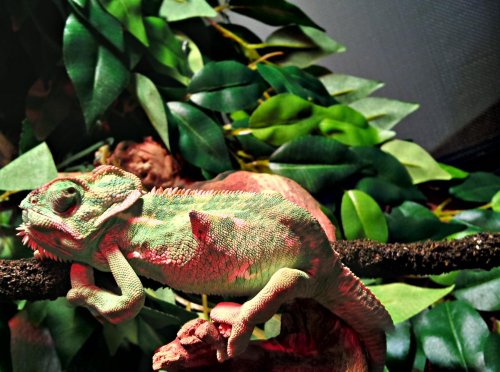Hello,
Just recently noticed that my chameleon has a weird growth or possibly somthing sticking out the side. He absolutely does not want to be handled right now. He moves still to go lay in the light but he seems unsure of his footings.
Cage-
auto mist
auto fog
humid control
light / temp control
dimension 2x2x3
eating crickets and calcium supplemented meal worms
Just recently noticed that my chameleon has a weird growth or possibly somthing sticking out the side. He absolutely does not want to be handled right now. He moves still to go lay in the light but he seems unsure of his footings.
Cage-
auto mist
auto fog
humid control
light / temp control
dimension 2x2x3
eating crickets and calcium supplemented meal worms








